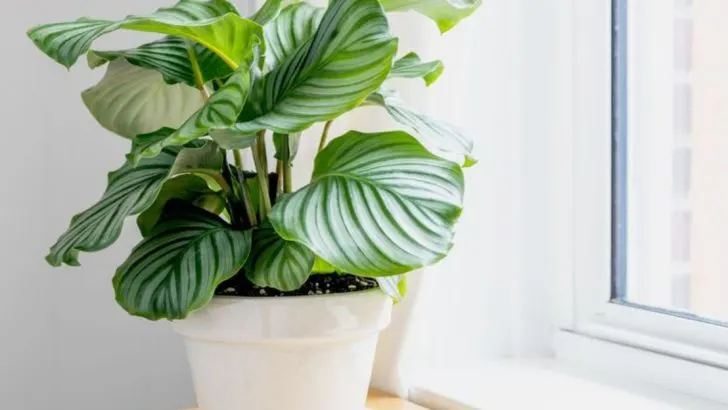Calatheas throw shade—literally—if you misstep! Miss a misting session Overdo the sun They’ll droop, curl, and sulk Leaving you staring at sad, sullen foliage. Treat them like houseplant royalty. Give warm, humid air that feels like a tropical hug. Use a chunky, well-draining potting mix. Water when the topsoil whispers “thirsty.” Keep them in bright, indirect light—no sunburn allowed. Feed with a weak liquid boost during growing months. Dust their broad, painted leaves with a soft cloth. Rotate the pot for an even show. Check for sneaky pests hiding under your touches. Trim tired leaves so new growth can steal the spotlight. Ready to watch those stripes pop and fronds unfurl? Grab your watering can now and dive into the guide. Follow these 14 tips for lush, happy Calatheas all year long. Your indoor jungle is about to blow minds—no drama required.
Choose the Right Spot
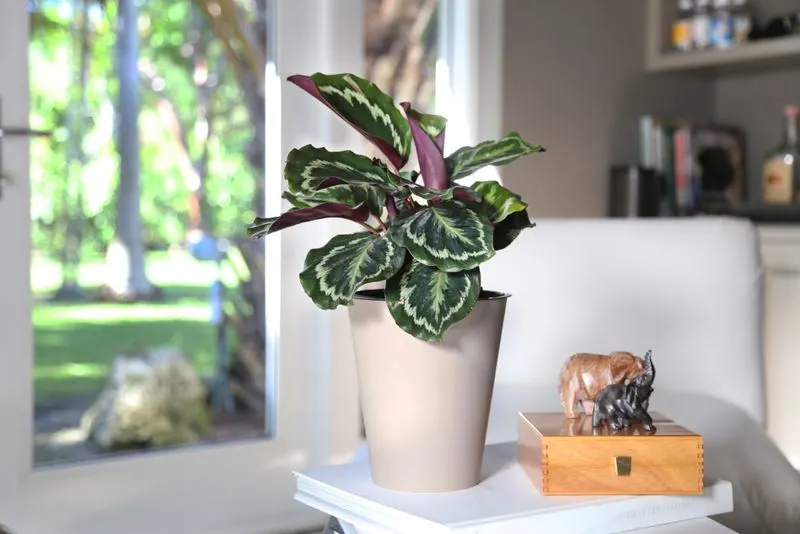
Location is crucial for your Calathea’s health. These plants adore indirect light, so choose a spot with filtered sunlight. Direct sun can scorch their leaves, causing them to lose their vibrant colors.
Avoid placing them near cold drafts or hot radiators; both can stress the plant. Calatheas thrive in stable environments.
A consistently warm, humid area is ideal. Consider the bathroom or kitchen, where humidity levels are naturally higher. Creating a stable, cozy nook for your Calathea can make all the difference in its growth and appearance.
Maintain Proper Humidity
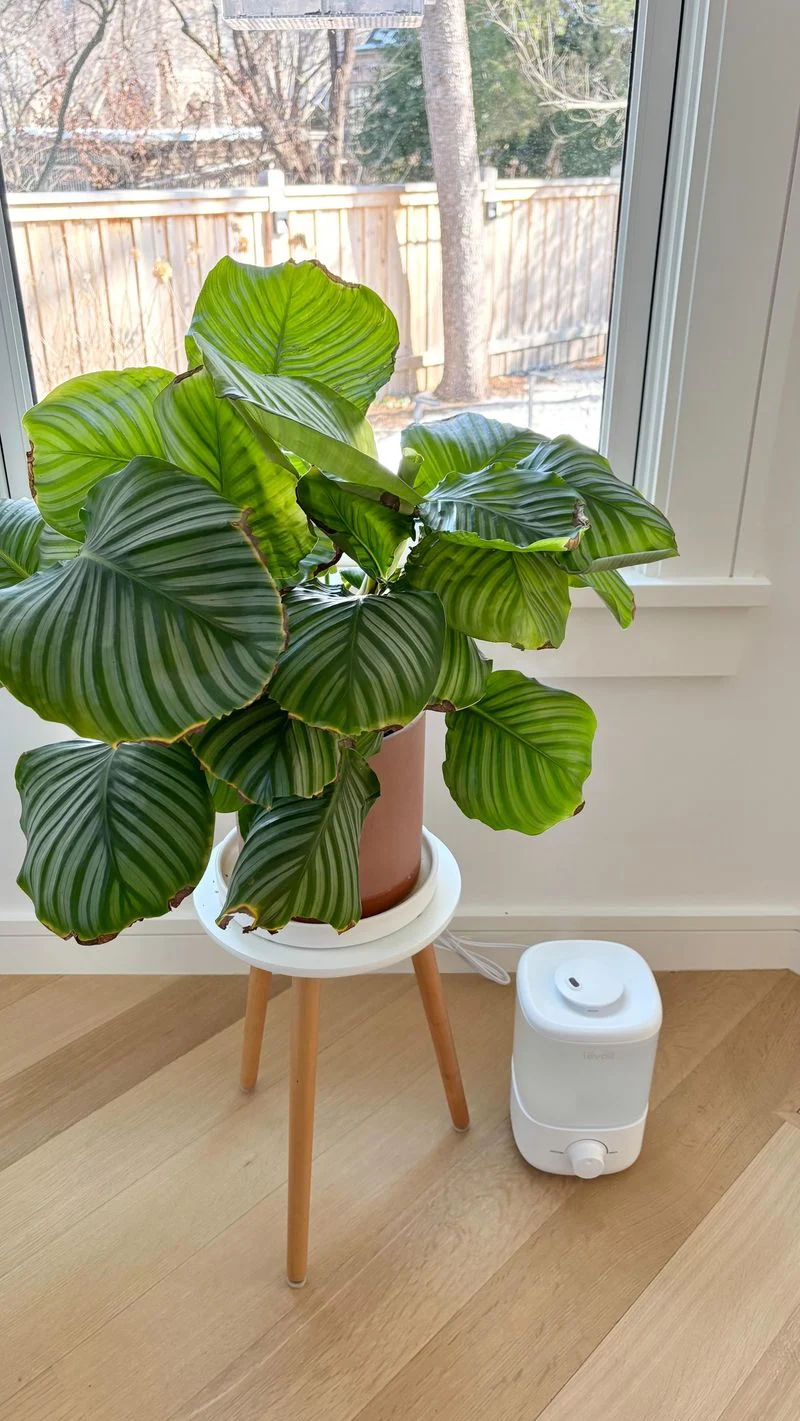
Humidity is a Calathea’s best friend. These tropical beauties require high humidity to thrive. Aim for humidity levels above 50%. If your home is dry, consider using a humidifier or placing a tray of water and pebbles underneath the pot.
Grouping plants together can also create a microclimate that boosts moisture levels.
Regular misting helps, but avoid saturating the leaves, which could lead to rot. Keeping the air moist not only benefits your Calathea but also enhances the overall indoor environment.
Water Consistently
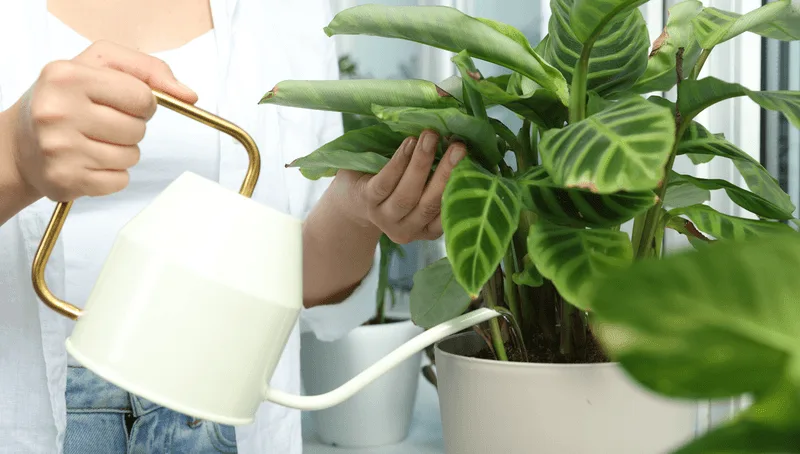
Consistent watering is key to a happy Calathea. Water your plant when the top inch of soil feels dry to the touch.
Be careful not to overwater; soggy soil can lead to root rot. Use room-temperature water to avoid shocking the roots.
Calatheas prefer rainwater or distilled water due to their sensitivity to chemicals like chlorine found in tap water. Regular, even hydration helps maintain their vibrant leaf patterns and overall health.
Use Well-Draining Soil
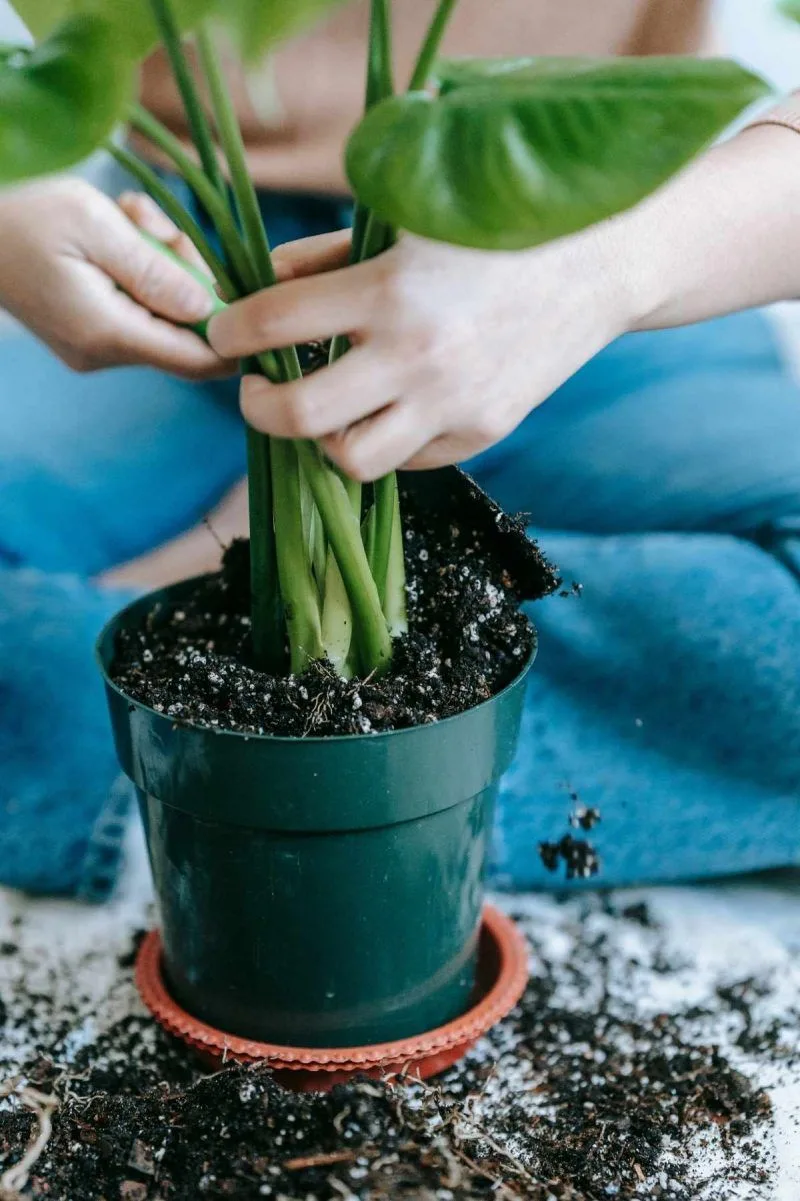
The right soil mix ensures your Calathea’s roots stay healthy. Opt for a well-draining potting mix, incorporating perlite or orchid bark to enhance aeration.
This mix prevents water from pooling, reducing the risk of root rot. A light, airy soil mimics the plant’s natural environment, promoting robust growth.
Repotting every couple of years refreshes the soil and provides space for growth. Proper soil care is foundational to keeping your Calathea thriving and visually stunning.
Fertilize Wisely
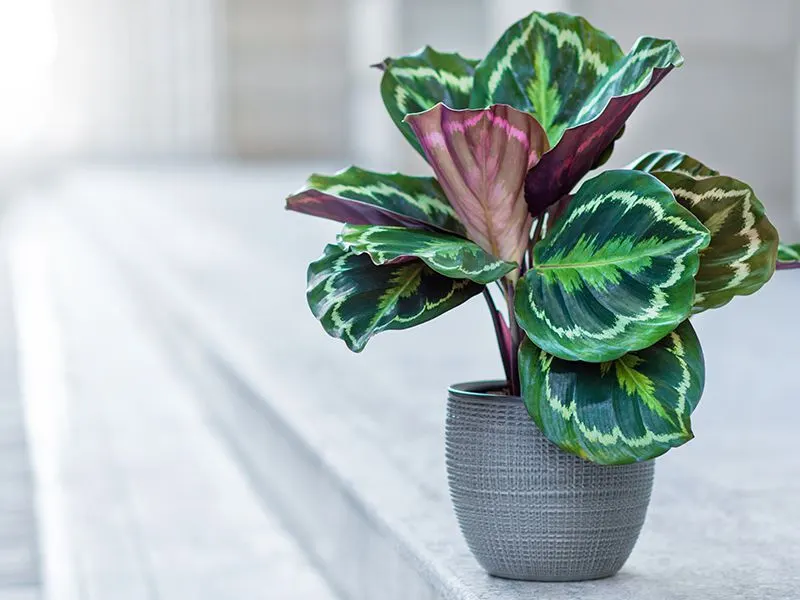
Fertilizing provides the nutrients your Calathea needs to flourish. During the growing season, use a balanced, water-soluble fertilizer every month.
Avoid over-fertilizing, which can cause leaf burn or discoloration. Always follow the recommended dosage on the label.
In the dormant winter months, reduce fertilization to allow the plant to rest. Thoughtful feeding schedules ensure your Calathea maintains its lush beauty year-round.
Trim with Care
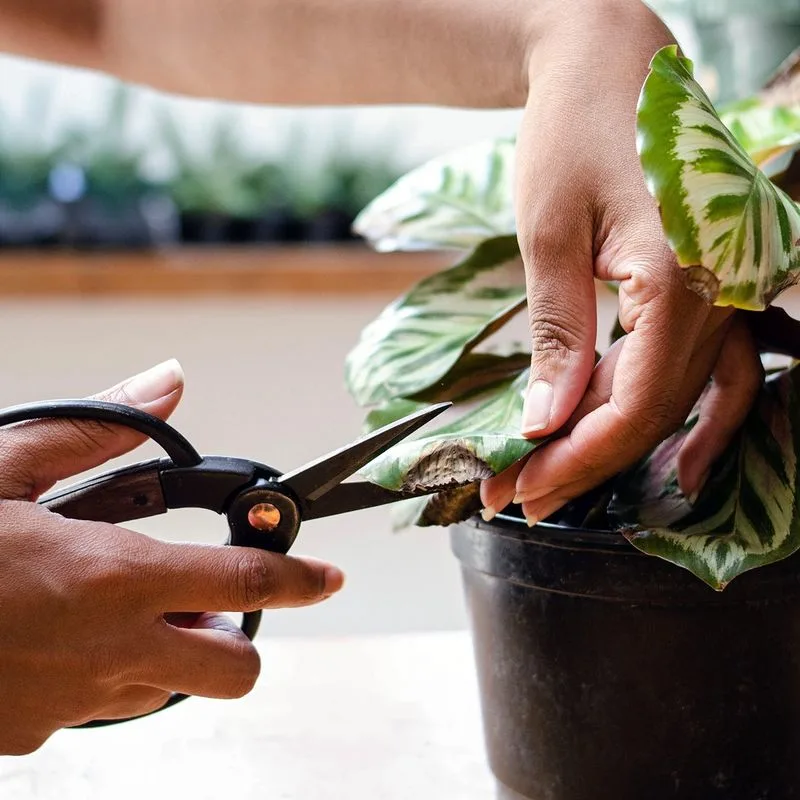
Pruning keeps your Calathea looking its best. Use clean, sharp scissors to snip away any brown or damaged edges.
Regular trimming encourages new growth and prevents disease spread.
Be gentle, as these plants can be sensitive. Proper trimming not only maintains the plant’s aesthetic appeal but also promotes healthier, more robust foliage.
Monitor for Pests
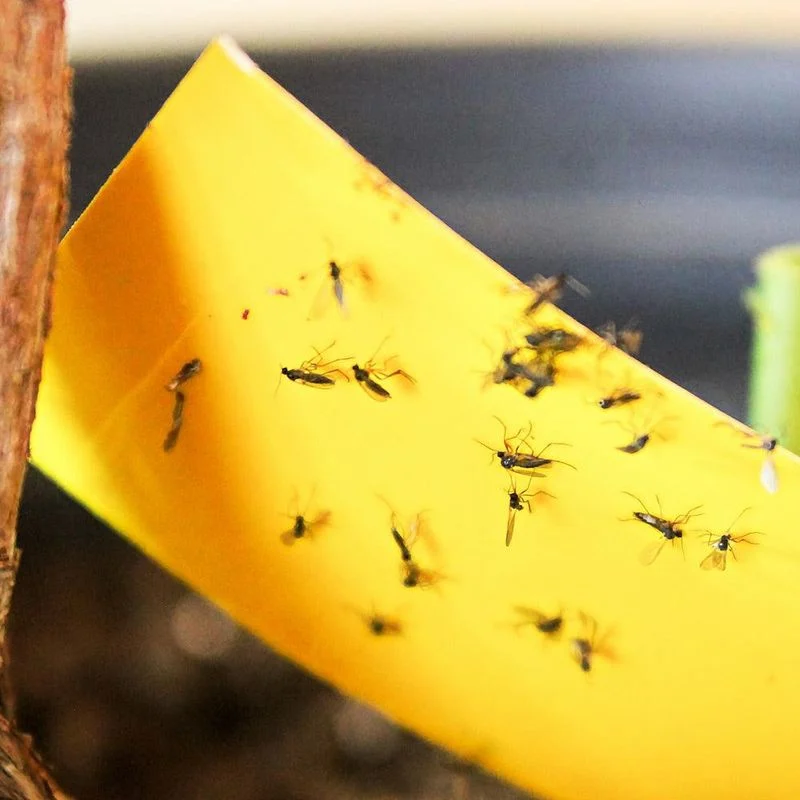
Vigilance is key when it comes to pests. Check your Calathea regularly for signs of infestation, such as discolored leaves or webbing.
Common pests include spider mites and aphids. Treat affected plants with insecticidal soap or neem oil.
Keeping the plant clean and dust-free minimizes pest attraction. Swift action ensures your Calathea stays healthy and vibrant.
Repot When Necessary
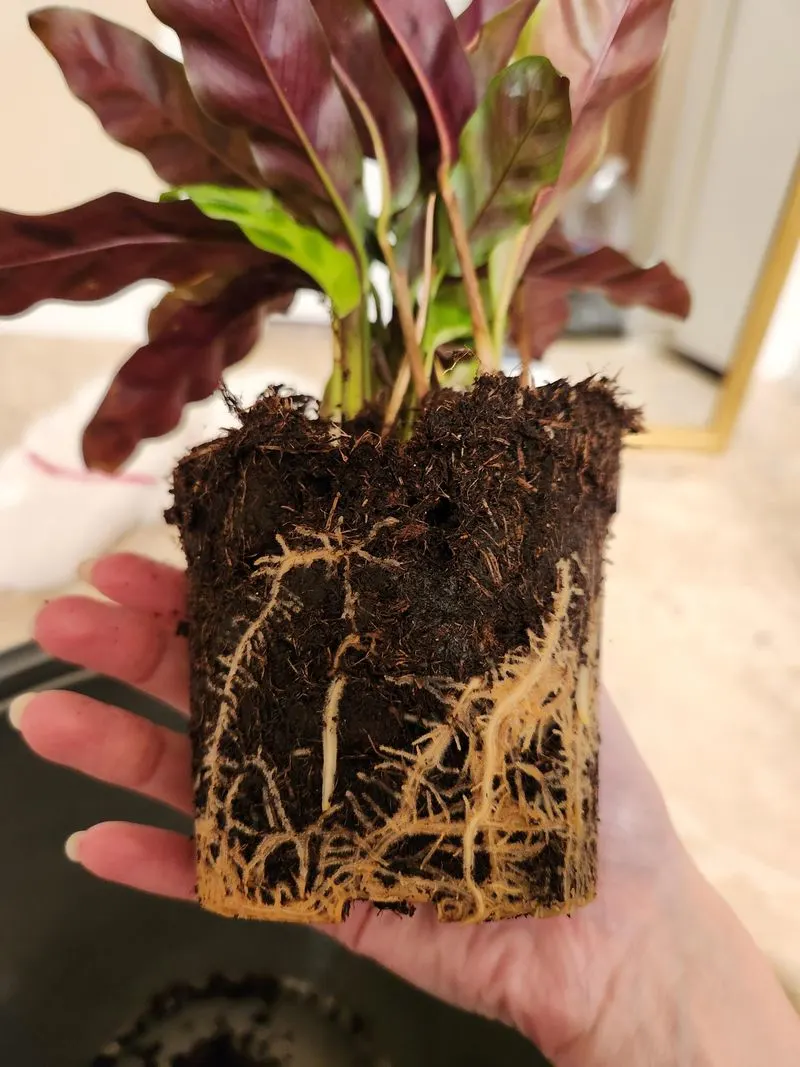
Repotting supports healthy growth. Move your Calathea to a larger pot every two to three years or when roots outgrow the container.
Choose a pot with drainage holes to prevent waterlogging. Refresh the potting mix to provide new nutrients for the plant.
Repotting revitalizes the plant, encouraging robust growth and maintaining its lush appearance.
Control Temperature
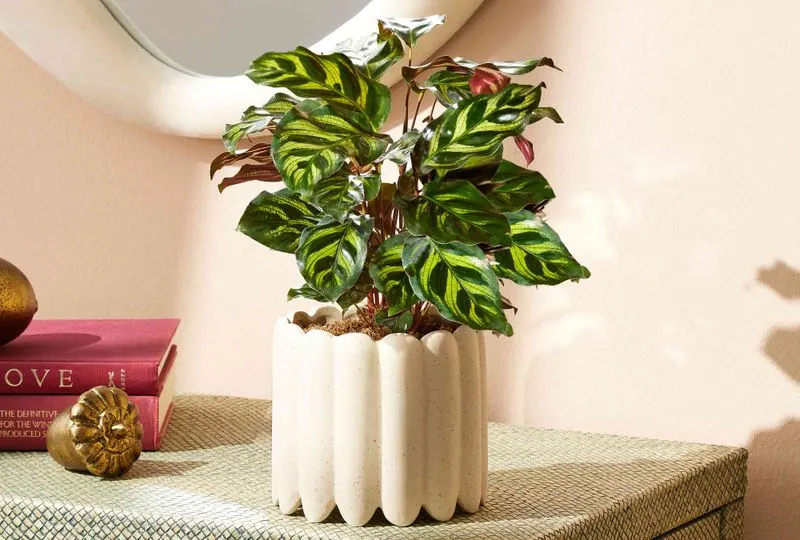
Temperature stability is vital for Calatheas. They prefer warm environments around 65-75°F (18-24°C).
Avoid sudden temperature changes, which can stress the plant and lead to leaf curling or browning.
Keep them away from heating vents or cold drafts. Maintaining a consistent, cozy atmosphere helps your Calathea thrive.
Rotate Regularly
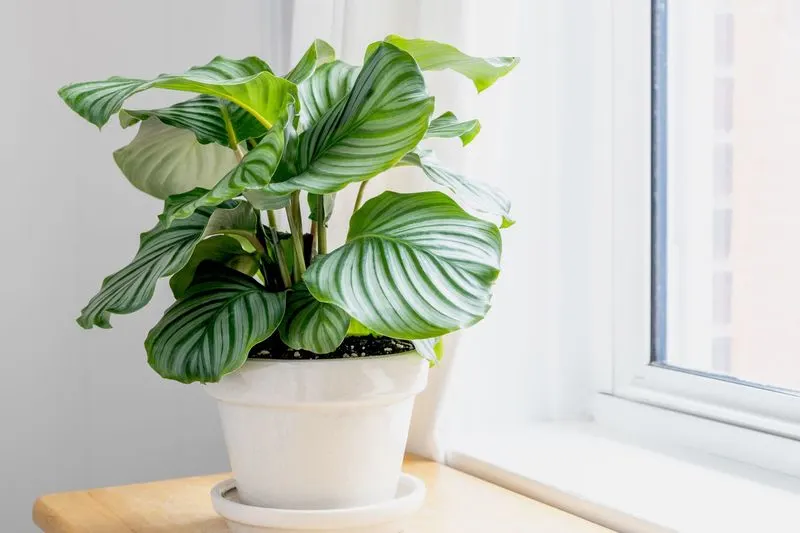
Rotation ensures even growth. Turn your Calathea every few weeks to allow all sides to receive equal light exposure.
This practice prevents the plant from leaning towards the light source and promotes symmetrical growth.
A balanced exposure helps maintain its aesthetic appeal, keeping the foliage lush and vibrant.
Provide Evening Rest
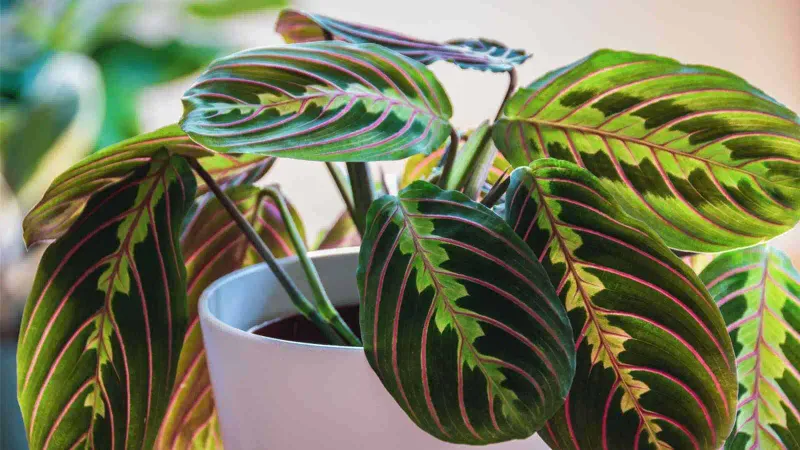
Calatheas have a unique rhythm, folding their leaves up at night. Mimic their natural habitat by providing a rest period in the evening.
Dim the lights or move the plant to a low-light area. This cycle supports their growth and keeps them stress-free.
A restful night helps maintain their stunning, vivid patterns.
Avoid Overhandling
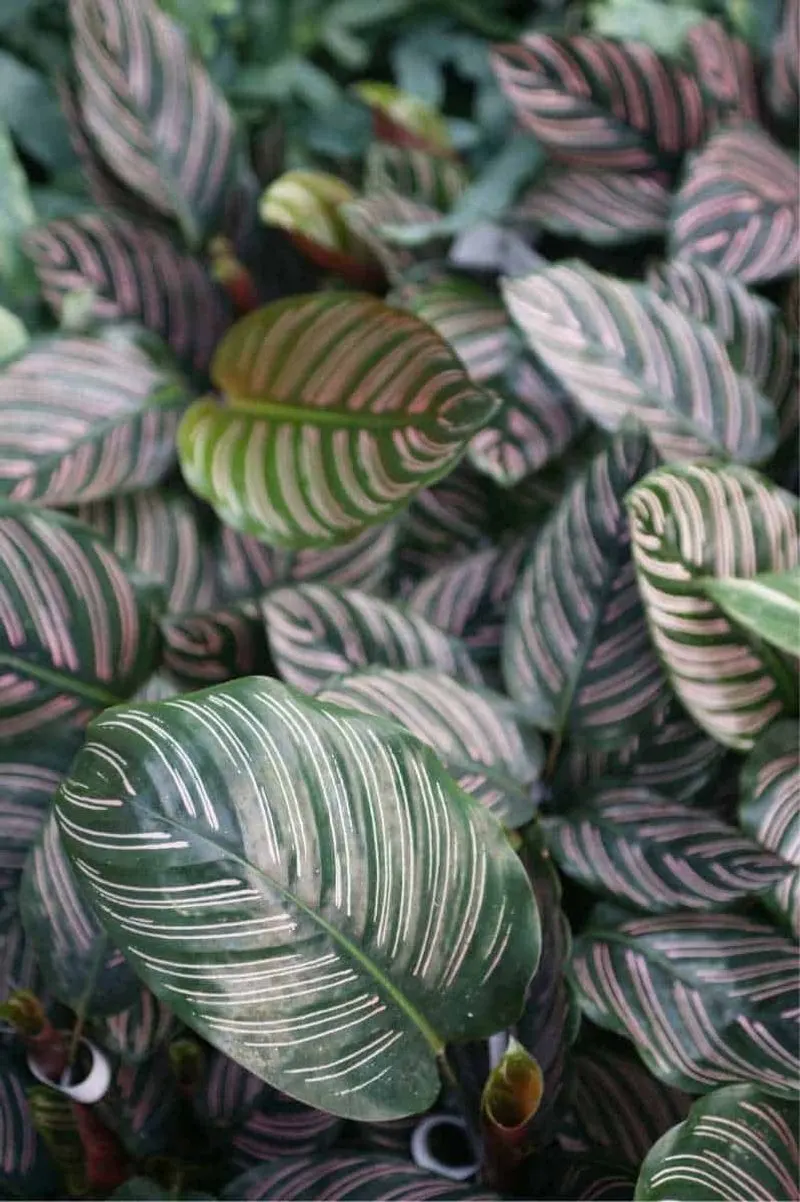
Resist the urge to frequently touch your Calathea. Excessive handling can damage the delicate leaves and disrupt their natural oils.
Observe and admire your plant without constant contact.
This approach helps maintain their pristine appearance and prevents unnecessary stress, ensuring long-lasting health and beauty.
Create a Calathea Oasis
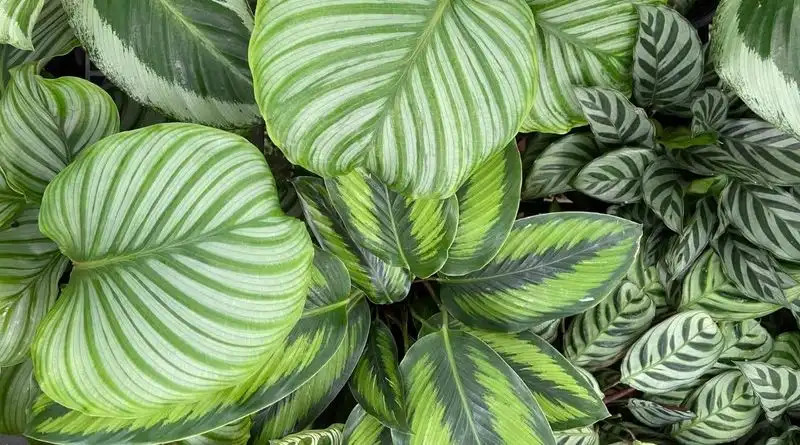
Why stop at one? Create a lush Calathea oasis by grouping different varieties together. Each type has unique patterns and colors, offering a stunning visual display.
This collection not only enhances the room’s aesthetics but also boosts humidity naturally.
Embrace the beauty of diversity and watch your home transform into a tropical paradise.
Embrace Leaf Movement
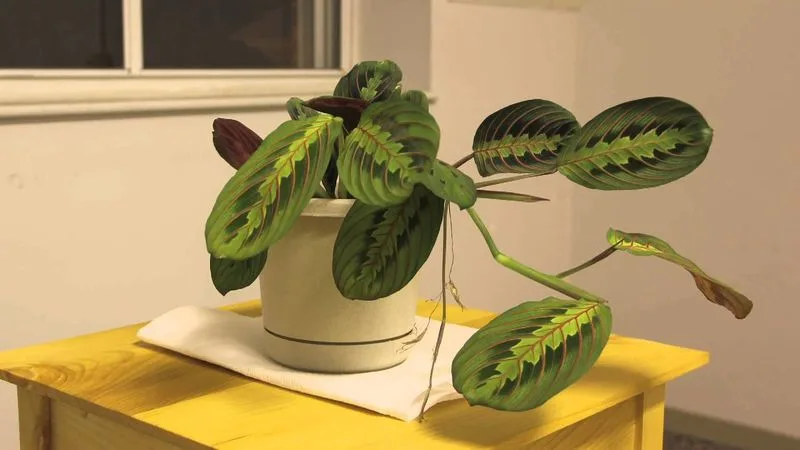
Calatheas are known for their leaf movement, responding to light and darkness. This phenomenon, called nyctinasty, is a sign of a healthy plant.
Embrace this unique trait as part of their charm.
Observing this nightly dance can be a relaxing routine, connecting you with your plant’s natural rhythm. Celebrate this lively aspect of Calathea care.

